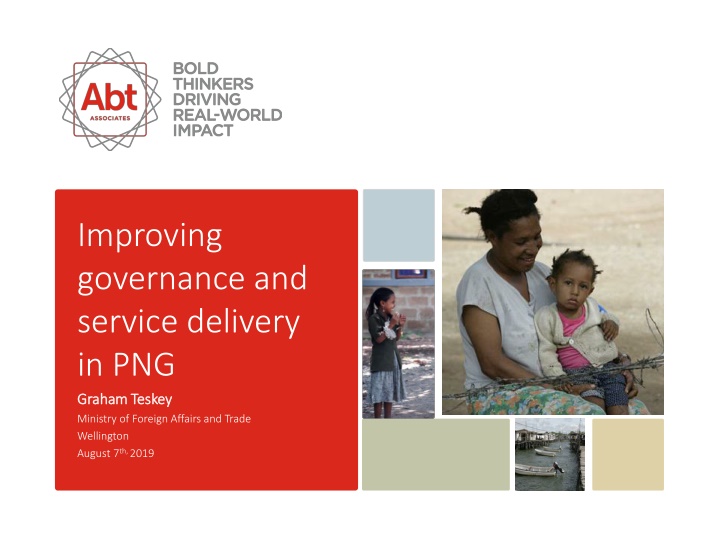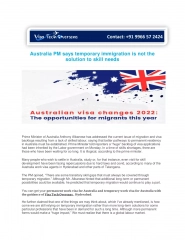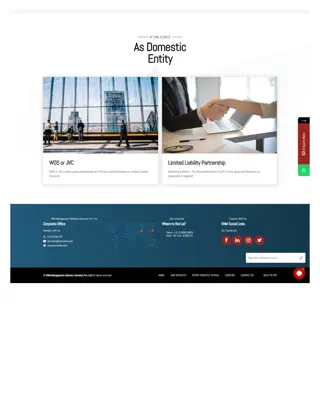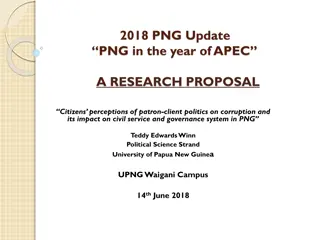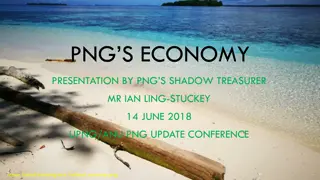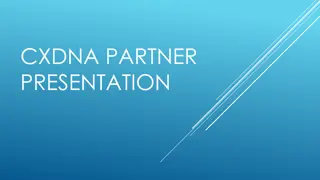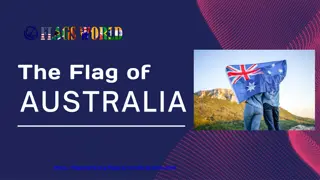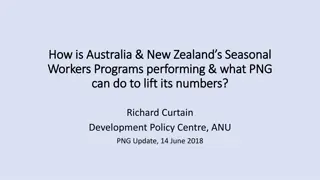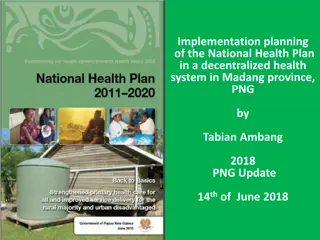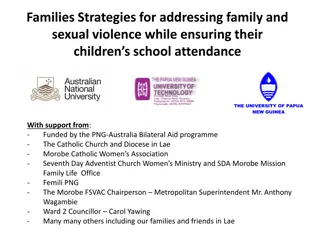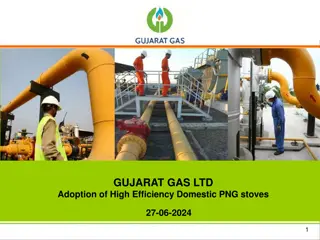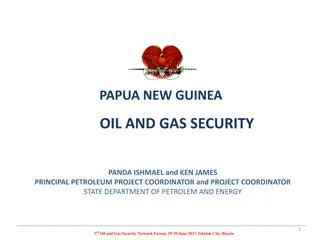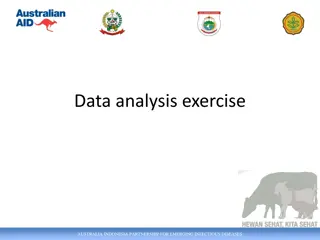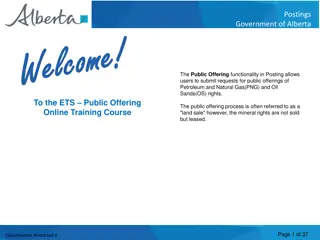Enhancing Governance and Service Delivery: Insights from PNG Australia Governance Partnership
This presentation discusses the governance landscape in Papua New Guinea (PNG) with a focus on service delivery reform. It covers the methodology, findings, and implications of the PNG Australia Governance Partnership, highlighting key aspects such as country comparators, data collection, and assessment timelines.
Download Presentation

Please find below an Image/Link to download the presentation.
The content on the website is provided AS IS for your information and personal use only. It may not be sold, licensed, or shared on other websites without obtaining consent from the author.If you encounter any issues during the download, it is possible that the publisher has removed the file from their server.
You are allowed to download the files provided on this website for personal or commercial use, subject to the condition that they are used lawfully. All files are the property of their respective owners.
The content on the website is provided AS IS for your information and personal use only. It may not be sold, licensed, or shared on other websites without obtaining consent from the author.
E N D
Presentation Transcript
Improving governance and service delivery in PNG Graham Teskey Graham Teskey Ministry of Foreign Affairs and Trade Wellington August 7th, 2019
Two parts What can we say about governance in PNG? 10 slides What can we say about public service reform and service delivery? 8 slides
(i) What can we say about governance? For any assessment there has to be: For any assessment there has to be: A framing of governance Agreement on country comparators What data to interrogate
PNG Australia Governance Partnership Governance: DFAT
PNG Australia Governance Partnership Capturing governance
PNG Australia Governance Partnership Survival and Expected functions
PNG Australia Governance Partnership The methodology 1. 1. 13 developing countries were selected as comparators 13 developing countries were selected as comparators: four in the region (Fiji, Solomon Islands, Vanuatu and Samoa) and nine others (Angola, Cambodia, Ghana, Lao PDR, Mongolia, Myanmar, Sri Lanka, Timor Leste and Zambia) 2. 2. 76 indicators were selected from 15 different publically 76 indicators were selected from 15 different publically- -available datasets Overall an 82.4% coverage rate was achieved, with Vanuatu having the lowest rate at 46.1% and Angola, Cambodia, Ghana and Sri Lanka having the highest at 100%. available datasets. 3. While the Governance Update reflects on the state of governance in the previous calendar year (with the 2017 report covering assessment for January-December 2016), actual datasets ranged from May 2015 to December 2016 4. As this 2017 assessment is the first of its kind for PNG and the PGF, data for each sample country was also collected for two time periods prior to 2017: 2013 and 2010 2013 and 2010 respectively
PNG Australia Governance Partnership Findings (ii) PNG and the Pacific
PNG Australia Governance Partnership Findings (iii): PNG and the nine
PNG Australia Governance Partnership Summary That the state of governance in PNG has improved in absolute terms in most domains of A, C and L since 2010, with exception of the provision of security, where both state legitimacy and authority have declined The overall state of governance in PNG is on par with that of other Pacific nations Governance in PNG about as effective as its level of development would suggest; no better or no worse
PNG Australia Governance Partnership Some high level conclusions PNG s governance challenge revolves less around capacity and more around authority and accountability Partners cannot expect PNG to skip straight to Weber and put in place in short order - a functioning, effective and transparent bureaucracy PNG is not a failed state, nor is it heading in the direction Although PNG does possess some unique characteristics (as do all countries) it is by no means unique in its development trajectory
What can we say about service delivery? #1 The Public Sector Results Chain
The mystery of public service delivery Conceptualising PSR Service delivery outputs / outcomes much easier to measure But do we understand the mix of incentives and accountabilities that operate here? What is the transmission mechanism? How can we be sure of attribution? Upstream: PSR programs to improve core government management functions Downstream: programs designed to improve service delivery improvements Delivery improvements Central (upstream) public system management improvements PSR intervention Policy improvements Which bits of upstream policy settings / systems are critical? Do we know enough about the accountabilities that may incentivise such change? Can we measure such upstream change? Cross-cutting process improvements
No. Investing in upstream reforms in countries with strongly limited civil liberties and political rights is distinctly more more risky other sectors in these countries. This is consistent with theory that would suggest that undertaking performance reforms to the machinery of government is difficult where political incentives for reforms are weak due to limited citizen accountability and strong opposition from vested interests. risky than investing in
What can we say about service delivery? #2 Searching for small solutions in improving health and education service performance in Solomon Islands and PNG Terence Wood ANU Proposal: to develop an analytical method to allow us to learn about feasible small-scale reforms from within-country variation in the quality of service delivery
Alternative approaches Some variation is a result of features we have no control over: i.e. Child mortality is lower in places too high to have Malaria. And it is higher in poorly accessible parts of the country This knowledge is boring in that it doesn t offer us much insight into how we can improve practices in delivery. However
